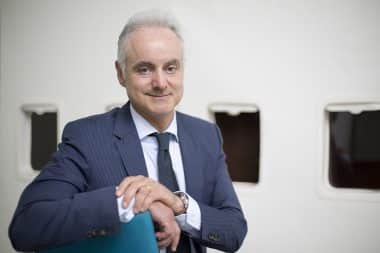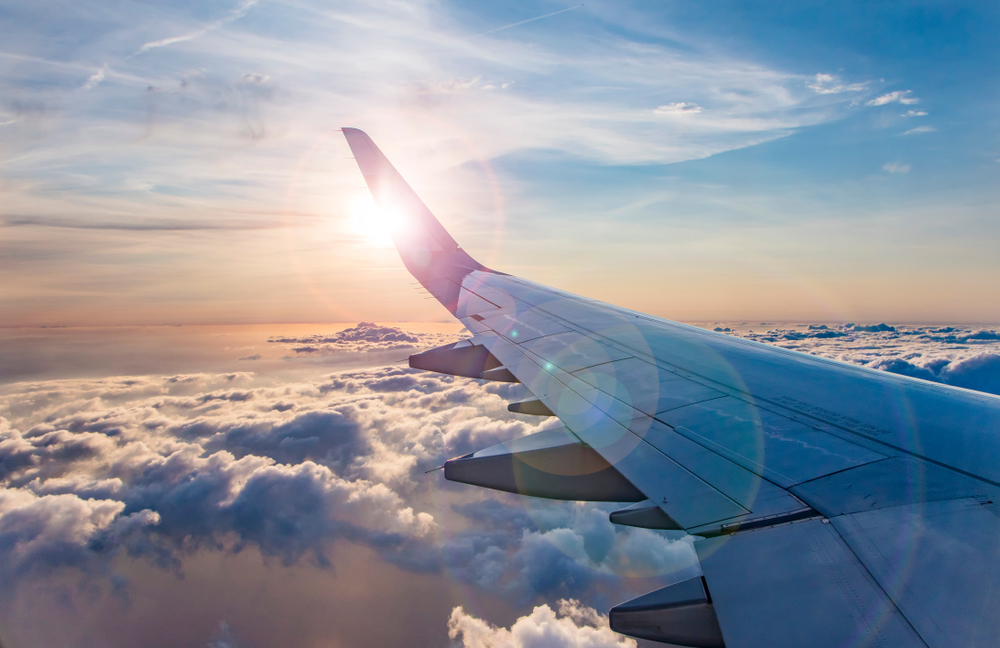The beginning of 2021 is also marked by the pandemic. Travel to foreign countries is severely restricted. But what impact will Covid-19 have on our future air travel? We spoke to Sergio Colella, President of SITA for Europe (SITA is the world’s leading specialist in communication and information technology in aviation) about measures and future technology.
Mr. Colella, the year 2020 stands for orphaned airports, unsafe passengers and empty hotels. Even for the 2021 high season, the vaccination measures that have now been launched are probably still too early.
What measures are planned in the aviation industry to give passengers a good feeling about booking a flight in 2021?
To date, the aviation industry’s focus in the field of safety has mainly focused on aircraft and safety procedures. After 9/11, we began to consider “anti-terrorism” measures as an essential aspect of passenger safety. Today, as a result of the Corona pandemic, just as much attention is suddenly being paid to people’s health during their travels. The aim is to keep the risk of infection to a minimum in the mass operation of an airport. SITA is constantly working on technology solutions to enable almost completely contactless travel. Ideally, the passenger arrives at the airport and is “ready to fly”. At airports in Beijing and Miami , your own face as a boarding pass is enough to get through the airport without contact.
There is also SITA Airport Management technology, which tracks the flow of passengers at every turn and then provides concrete insights in real time. This allows airports to recognize where passengers are moving and develop guidance systems. The density of people must be proactively controlled, as well as social distancing in day-to-day operations and, in the long term, in planning.
New automatic border control kiosks will collect high-quality biometric data and ensure more effective control of entry conditions into the EU. At the same time, they will shorten waiting times for travellers.
Electronic health certificates are also possible – analogous to electronic visas, which are linked to the traveler’s passport number in the computers of the border guards. Vaccinations or current health tests could be noted in it. In order to be able to enjoy the freedom to travel as before, we must be willing to reveal more information about our health.
In summary: Social distancing, contactless travel, health visas and border controls are possibly the most important measures that will be taken in the aviation industry in 2021.

What options are there – also with regard to digitization – to avoid interpersonal contact at check-in as much as possible?
We always recommend taking advantage of the technologies already available to complete the travel steps, before Travelers reach the airport and use the automated passenger solutions that allow them to complete the steps without touching surfaces in the airport. It’s a safer and often much faster way to get through the airport. Basically, the smartphone becomes a travel remote control. This means digital check-in from home, boarding card on the smartphone, checking in luggage yourself and no longer at the counter, biometric systems such as facial recognition, instead of passport control, will become more and more a matter of course in the near future.
At Beijing’s BCIA Airport this year, we integrated the SITA Smart Path, which means that all passenger handling has been automated with SITA technology, including check-in, baggage handling, entry and exit, security and boarding.
Passengers only have to register once at check-in and can then easily get through the airport thanks to facial recognition. It has already been proven that it can significantly speed up handling at Beijing Airport: More than 400 passengers of an Airbus A380 were on board in less than 20 minutes. The more efficient handling shortens waiting times for all passengers and allows them more social distancing. Another advantage in COVID-19 times is that airport equipment no longer has to be touched, which reduces the risk of infection.
The SITA Smart-Path is already being implemented at other major airports around the world and in a few years, this process will not be an exception, but the norm worldwide.
What are the implications of applying low-touch technology to flight safety?
Especially in times of the Corona pandemic, the uncertainty of air travelers is of course high. Of course, the low-touch technology has no direct influence on politically decided travel restrictions or flight cancellations. But it can help to regain the trust of passengers, which is SITA’s ultimate goal this year and next.
Air passengers want to travel again, but also demand the best possible protective measures on site at the airport, as well as on the plane itself. Our low-touch technologies make a significant contribution to regaining the trust of airline passengers and ensuring the best possible safety for their health. These include distancing, hygiene and sanitation, as well as controlling the health of passengers. Even with new vaccines, the industry will continue to exercise caution to reassure passengers.
A positive side effect is, of course, that annoying waiting times are reduced and processing takes place much more efficiently.
What preventive measures are planned “on board” in the future to protect the health of passengers in the best possible way?
Trust is being built on board by increasingly providing passengers with 4G data networks and Wi-Fi to eliminate the need for impersonal touchpoints, such as screens in the backrest, and to facilitate social distancing.
The usual precautions such as wearing a mouth-nose protection, washing hands or regularly disinfecting the vehicle interior will remain essential for the time being.
Many airlines have also greatly reduced their food offerings during short-haul flights to avoid many passengers consuming next to each other at the same time without mouth and nose protection.
In your environment, there was recently talk of “digital passports”. Can you tell us more about it?
We expect the development of a digital identity to replace the traditional passport in the coming years.
In the longer term, there are initiatives that allow travelers to store their identity credentials on their smartphones. The International Civil Aviation Organization (ICAO) is working on a digital travel document derived from the ePassport issued by your government, which can be stored in a secure wallet on your smartphone.
Future travelers will be able to securely exchange their IDs with governments, airports, and airlines from their phone and under their control, while ensuring the protection of their personal information. SITA is partnering with the Sovrin Foundation, an international non-profit organization that is exploring the use of blockchain technology for this purpose. The Sovrin initiative promises a solution that could be the basis for how we travel in the future.
How do you think the numbers of air travelers will develop in the coming months and years?
Based on all the predictions of well-known associations such as IATA, ERA and ACI, passenger numbers will most likely not return to 2019 levels until 2024.
Vaccines and testing are expected to prop global travel to 50% of 2019 levels in 2021, with significant increases later in the year.


